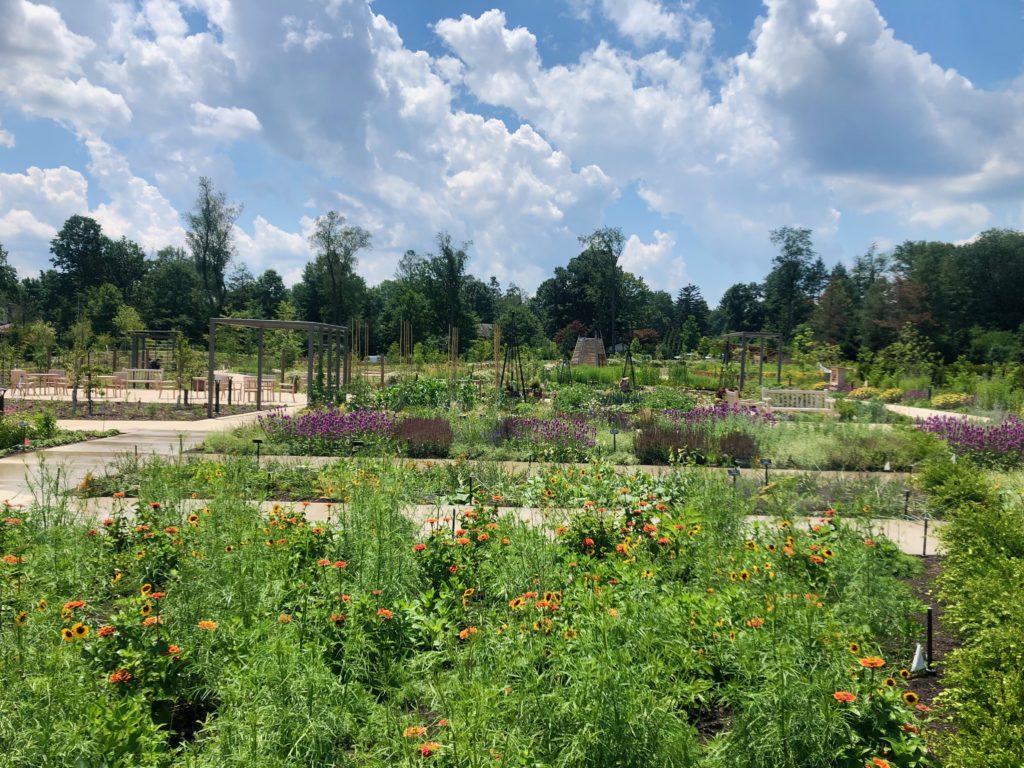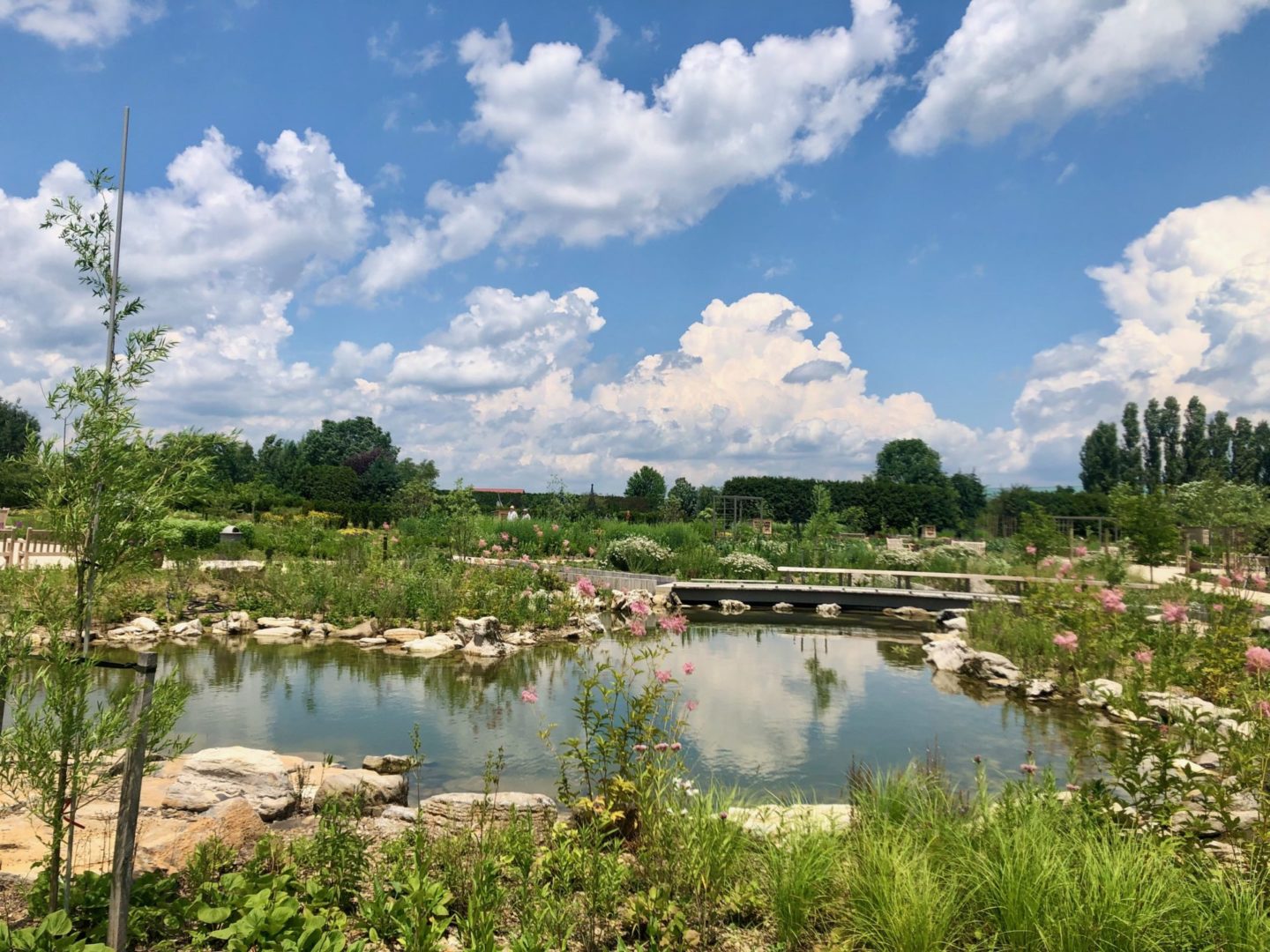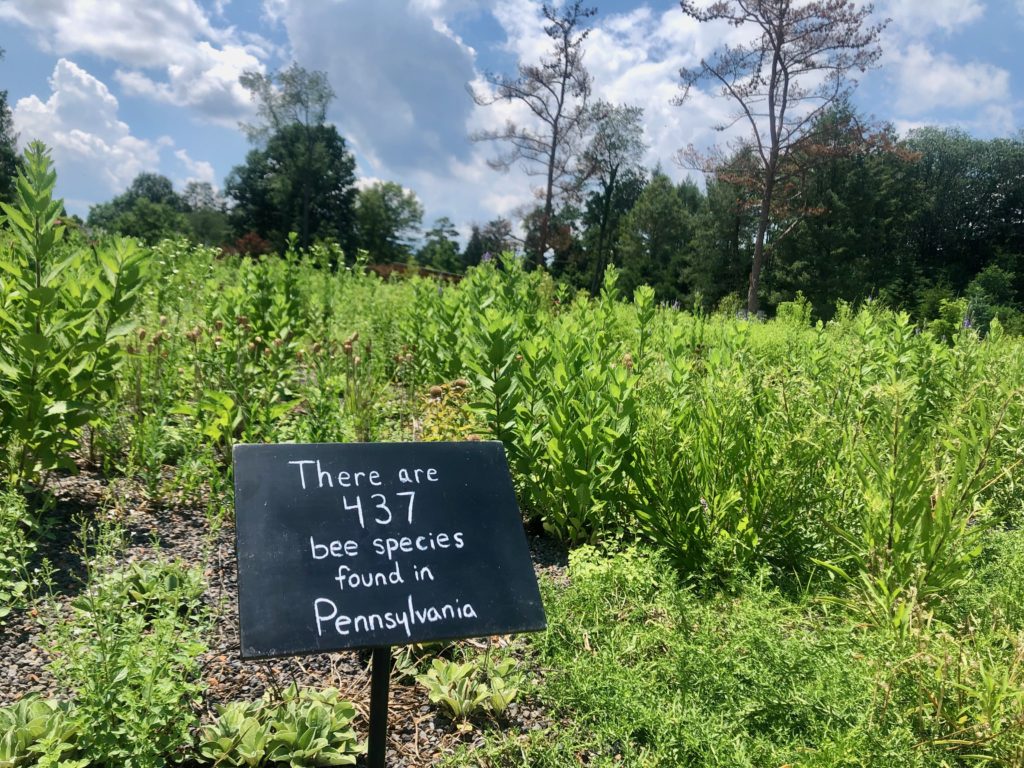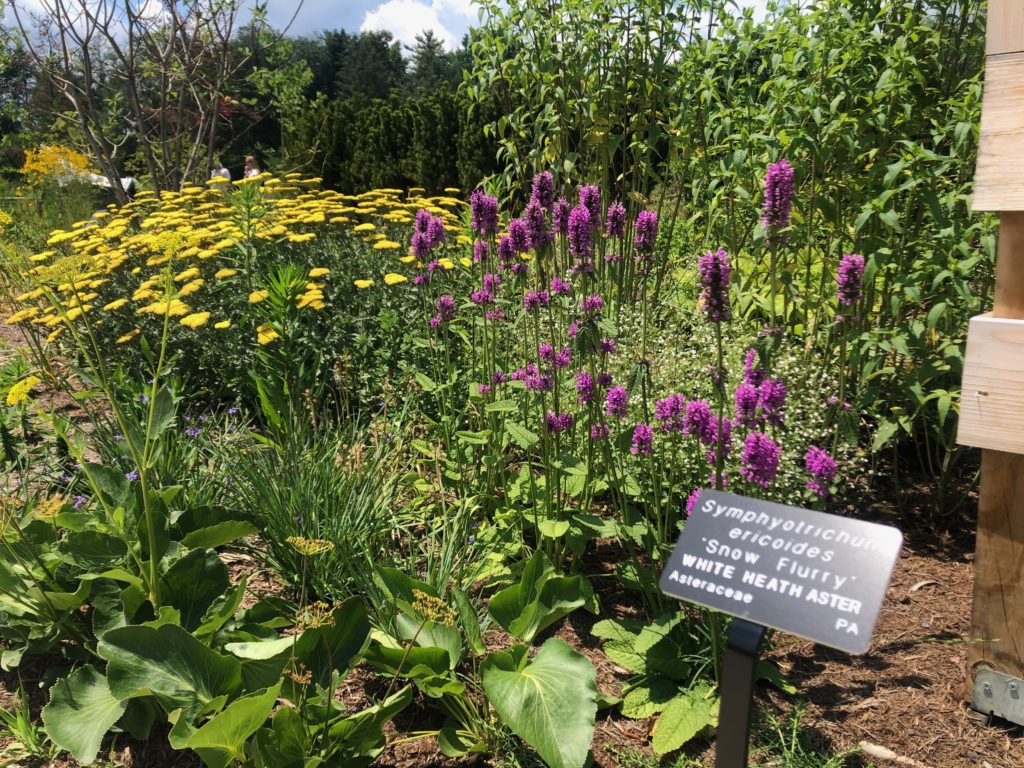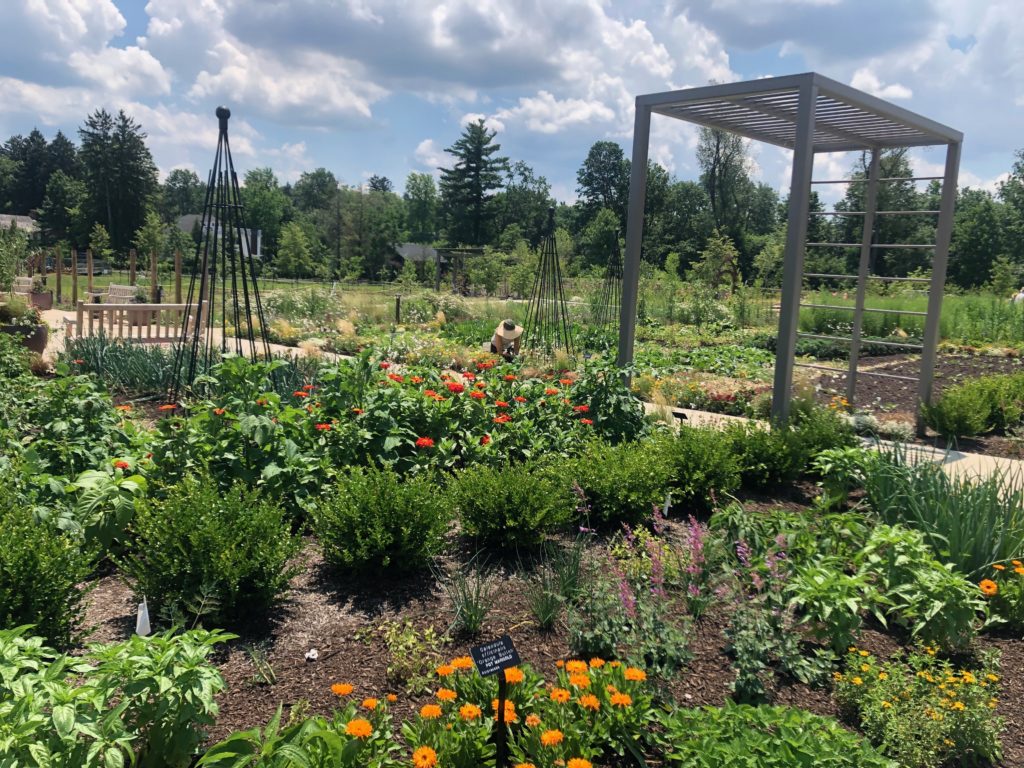After more than a decade of planning and a year and a half of construction, the Arboretum at Penn State’s newest garden opened to the public this week.
The 3-acre Pollinator and Bird Garden increases the H.O. Smith Botanic Gardens by about 60%, creating a new space for relaxation and enjoying nature as well as for research and education.
“There are number of features here that we don’t have elsewhere, so we’ve added a great deal of variety to the experience when one visits,” Kim Steiner, founding director of The Arboretum, said on Wednesday afternoon. “And it’s attractive; we tried to make it a beautiful space. But then behind all that is some really hard science about how to attract native insect pollinators.”
A goal of the garden is to attract every regionally native pollinator, and the science in action “is the really unique thing about the gardens,” Steiner said.
Harland Patch, director of pollinator programming and a Penn State professor of entomology, said the garden integrates with university research as well as providing a place to educate students of all ages and the general public about pollination science.
“This gives us a unique opportunity to see when we put plants in a certain area if things get established and what kind of pollinators show up, but it also gives a venue in which we can talk about pollinator science to the general public: K-12 kids, obviously university students and just the general public, growers,” Patch said. “We have an orchard. We have a whole demonstration garden for agriculture, talking about pollination services to Pennsylvania’s important pollinated crops. It gives us a lot of places and venues to both communicate science and to do science.”
The garden has been “a community effort,” Shari Edelson, director of operations, said in a statement. More than 620 people volunteered to help plant the garden’s 143,000 plants. The project, designed by Didier Design Studio and Phyto Studio, was funded entirely through philanthropy, with nearly 500 individual donors contributing.
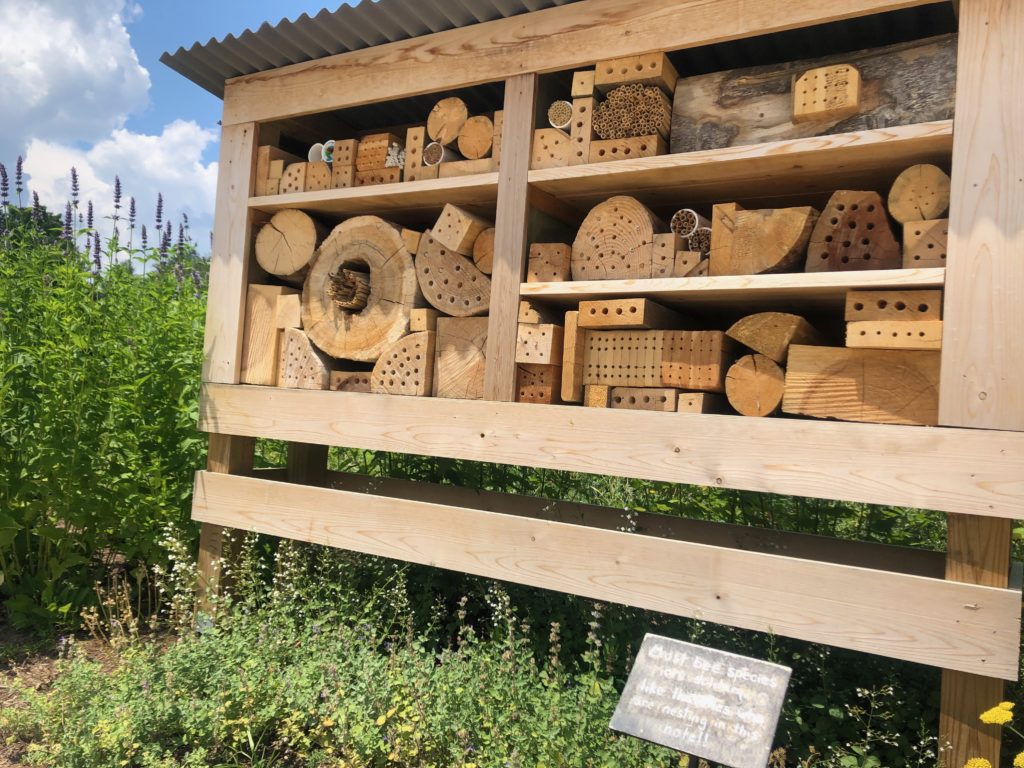
“The planning of this garden has been over 10 years, from initial ideas about creating a pollinator garden built from the science,” Patch said. “What makes this unique is that it is created from what we think will be the most attractive and beneficial plants for the pollinators, as well as different structures like the wild bee houses and things like that. It’s taken quite a while and a lot of different people to create this garden.”
The result is a garden made up of several sections. A “backyard garden area,” as Patch describes it, has “the best of the native and the best of the non-native plants: non-native plants that support our pollinators and the native plants that are well-behaved and don’t take over your yard.”
Several “hotels” are set up along the way to provide nesting spots for bees, most species of which are solitary. A round meadow sits nearby a structure that will eventually be a honey bee observation hive.
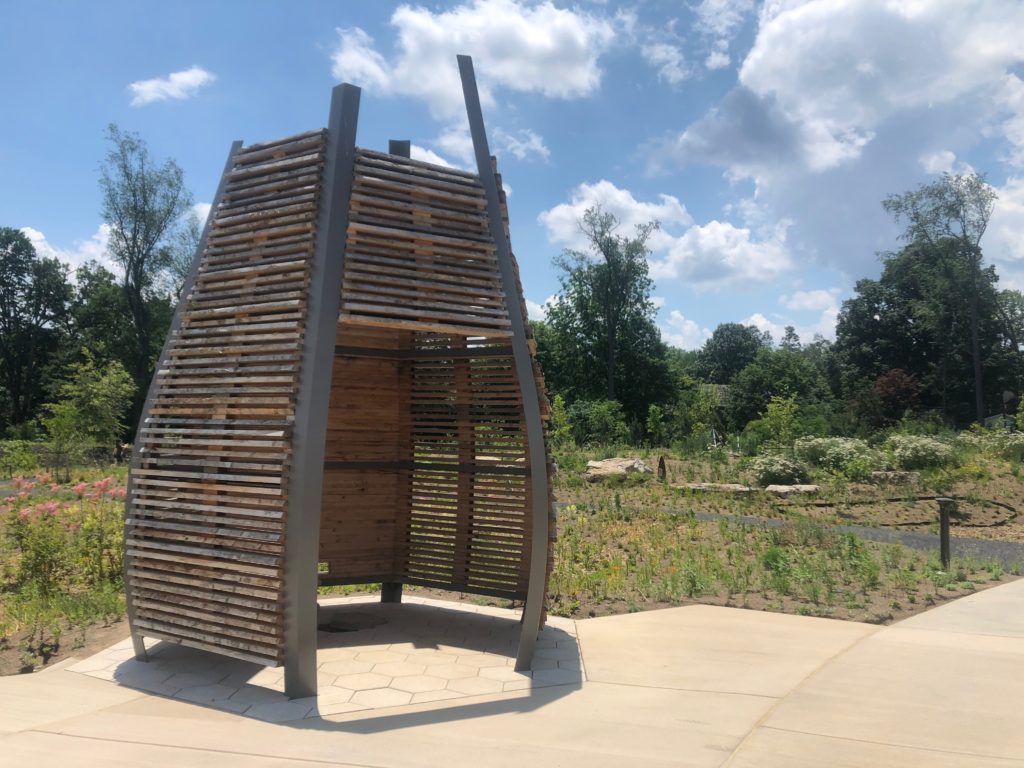
A forested area will be located at the edge of the garden and as the trees grow, “you’ll have a lot of ephemeral spring plants that grow in the forest in Pennsylvania,” Patch said. “People often ask, ‘What can I grow in a wooded area?’ You’ll be able to see those plants here.”
A stone terrace overlooks a pond, which can also be viewed from the porch of the bird house at the back of the garden. The house features a bird bath and a small pond of its own.
Bird feeders and nesting boxes will be added throughout the garden, and Steiner said the house is as much a place to relax out of the sun as it is to catch a glimpse of various winged creatures.
Margaret Brittingham, an avian ecologist and professor of wildlife resources, said the garden along with other parts of the Arboretum will be a useful outreach tool for educating the public.
“A lot of bird populations have declined as have pollinators, so we’re really excited about getting homeowners and landowners to know how to landscape their own backyard to make it a place for pollinators and birds,” she said. “Really it’s all connected, because you start with native plants supporting the insects and then the insects are the major food source for the birds.
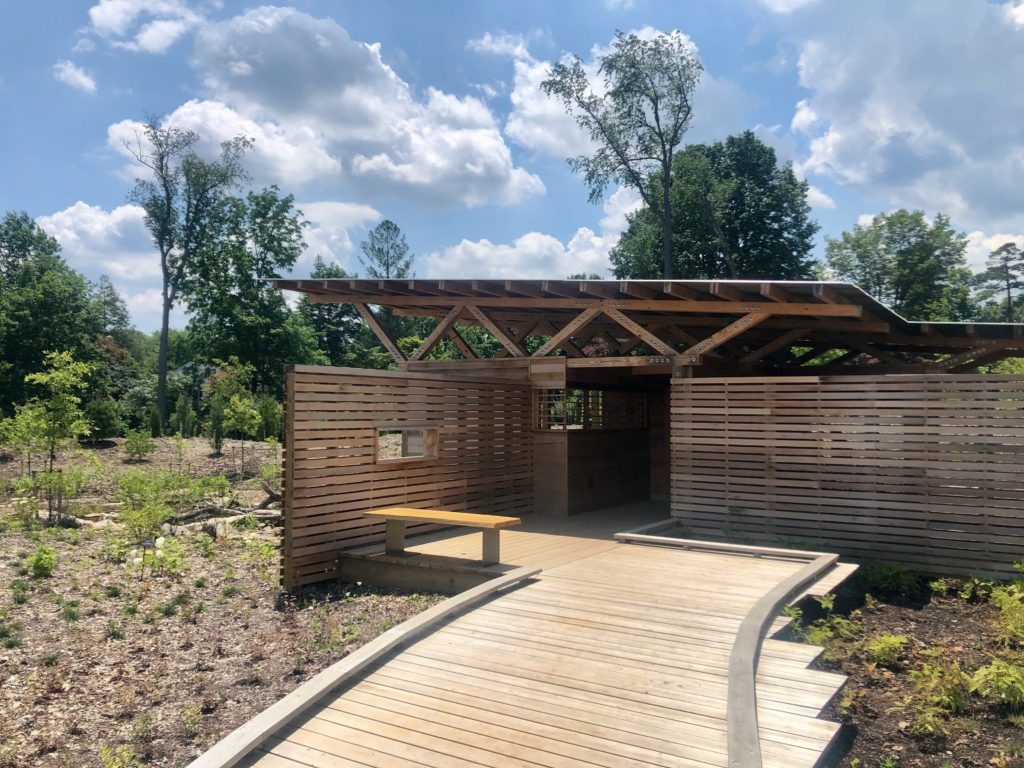
“I think it’s kind of empowering people to realize they can do things in their own small space and then also learn about the plants, the insects and the birds at the same time.”
In the winter months, Brittingham expects the garden will attract raptors, from red-tailed and Cooper’s hawks to the lesser seen peregrine and merlin falcons. During migration periods in the spring and fall, she believes the garden will be a “stopover site” for warblers that have been breeding primarily in area forests.
“A lot of them will be feeding on berries so some of the shrubs here will be producing berries. They’ll be coming and looking for water spots,” Brittingham said. “I think that’s going to be a really exciting time.”
For Steiner, the opening of the garden has a special significance. Director of the Arboretum since it opened in 2009 and a professor of forest biology, he delayed his retirement until he saw two projects through: the completion of the Pollinator and Bird Garden and the planning for the new Palmer Museum of Art to be located adjacent to the Arboretum.
His retirement was effective at the end of the day on Wednesday.
“I’m happy with where we are right now so it’s a good time for me to retire,” Steiner said. “It’s nice. I’ll enjoy coming here for the rest of my retirement.”
